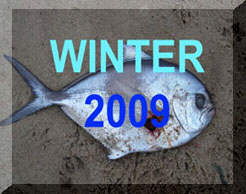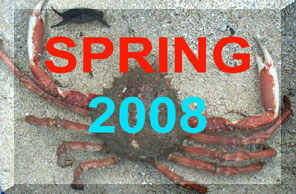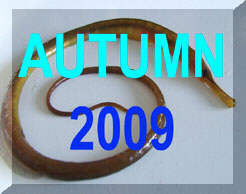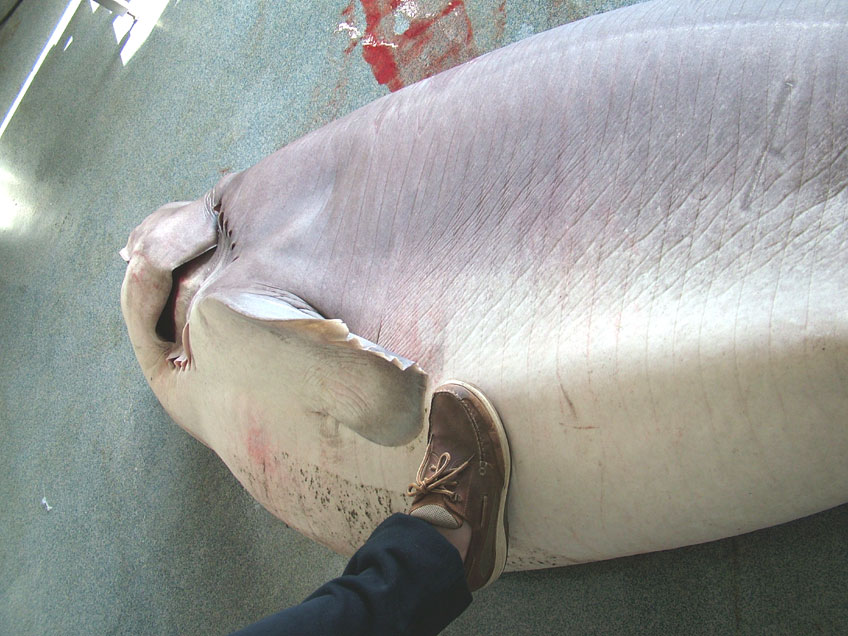EVENTS

ADUR
WORLD OCEANS DAY
Understanding
and celebrating our marine environment
Saturday
6 June 2009
10:00
am to 4:00 pm
on
Coronation
Green, Shoreham-by-Sea, Sussex,
as
part of the Adur
Festival
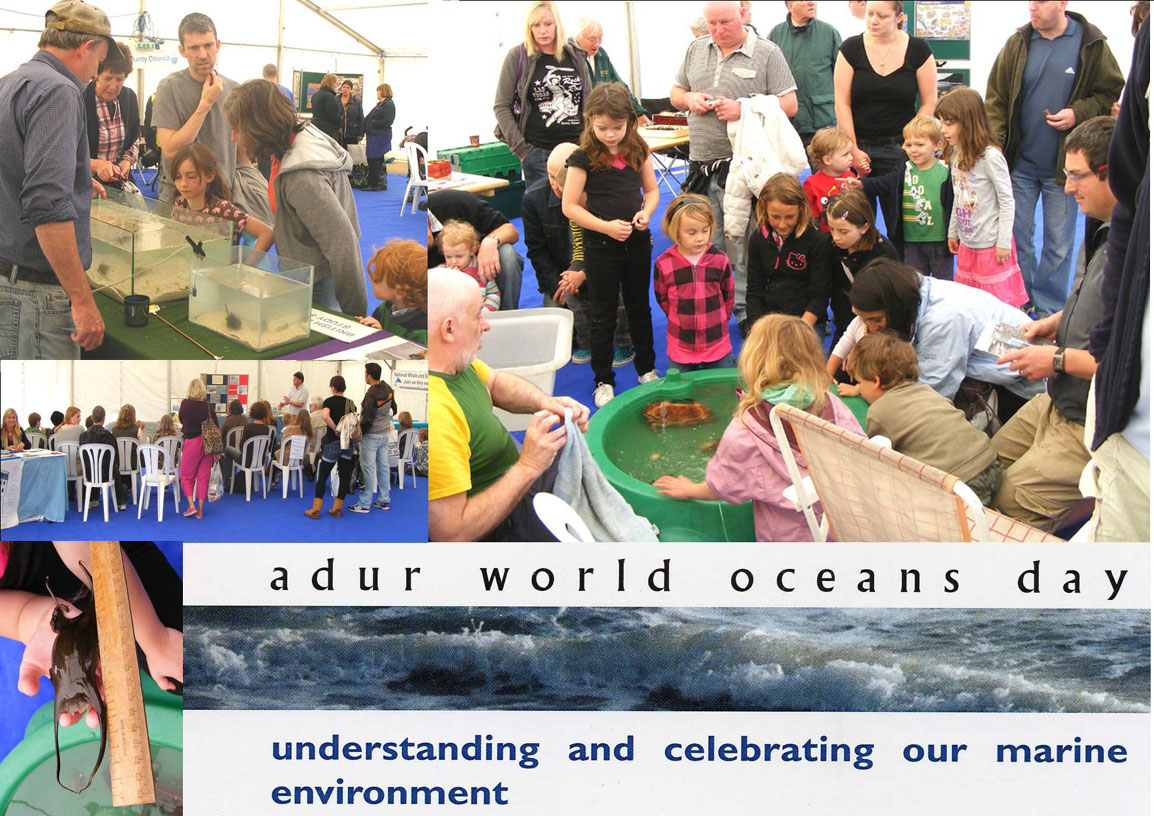
Adur
was one of the UK leaders in presenting the eleventh environmental exhibition
of World Oceans Day on Coronation
Green, Shoreham-by-Sea.
Adur
World Oceans Day took place in the marquee on Coronation
Green on 6th
June 2009 on the opening Saturday of the Adur
Festival. Len Nevell
was there with the usual exhibition of lobsters and crabs. The innovative
aquarium displays of seashore life, strandline exhibits and photographs
will again be in on show. Experts will be on hand to answer your queries
about life in the oceans and on the seashore.
I think
World
Oceans Day this is best described by the Nobel prize winning author
John Steinbeck when writing about Ed 'Doc' Ricketts of Cannery Row fame
in which he wrote 'commercial fishermen harvest the sea to feed men's bodies
and a marine biologist harvests the sea to feed men's minds'
Quote
by Andy Horton (British Marine Life Study Society)
The
Friends
of Shoreham Beach played an important
part with their own displays and information about the Nature Reserve and
plants of the shingle beach.
Len
Nevell: Lobster's Meal Time
Adur
World Oceans Day is run by a committee
comprising representatives of the
British Marine
Life Study Society, West
Sussex County Council,
the Sea Watch Foundation,
Friends of Shoreham Beach and other groups, with support from
Adur
District Council.
World
Oceans Day was declared at the Earth Summit in 1992.
World
Oceans Day UK Web Page
Sussex
Marine Jottings Report and Images
LATEST
NEWS:
25
June 2009
A
metre long Bluefin Tuna, Thunnus
thynnus, jumped 30 cm clear of the sea in
the vicinity of a fishing boat seven miles off Shoreham-by-Sea,
Sussex, in the early afternoon on a sunny day. It was speculated that this
tunny (which is now rare in British seas)
followed the large shoals of fish in, which in turn attracted the fishing
vessel. "As it left the water I was able to catch sight of its gleaming
multi-coloured sides of the the torpedo-shaped fish and the small pre-caudal
triangular finlets appeared dark blue. Its weight was estimated to be about
12 kg."
BMLSS
Tunnies
Adur
Wildlife News (June 2009)
16
June 2009
A rod
caught Blunt-nosed Six-gilled Shark,
Hexanchus
griseus, was caught about three miles off
Loop Head and
landed on board the Clare Dragoon
out of Carrigaholt,
County
Clare, south-west Ireland. The fish which weighed in at 480 kg, (1056
lb),
beats the existing European angling record which stands at 466 kg and was
landed in the Azores.
 The
Six-gilled
Shark is an active shark found in seas of
between 200 to 1000 metres deep. These depths occur only off the Continental
Shelf to the south and west of the British Isles. Between 1960 and 1984,
at least 31 specimens have been recorded off west Scotland, south-west
Ireland, the Faeroe Bank, and west of Ireland down to 964 metres. The majority
of reports are from the main fishing areas along the shallower slope on
both sides of the Rockall Trough, which is the 1000 metre deep trench that
runs between the Rockall Bank and the Irish coast. This very deep trough
extends from Iceland down to the Bay of Biscay.
The
Six-gilled
Shark is an active shark found in seas of
between 200 to 1000 metres deep. These depths occur only off the Continental
Shelf to the south and west of the British Isles. Between 1960 and 1984,
at least 31 specimens have been recorded off west Scotland, south-west
Ireland, the Faeroe Bank, and west of Ireland down to 964 metres. The majority
of reports are from the main fishing areas along the shallower slope on
both sides of the Rockall Trough, which is the 1000 metre deep trench that
runs between the Rockall Bank and the Irish coast. This very deep trough
extends from Iceland down to the Bay of Biscay.
BMLSS
Six-gill Sharks Page 1
BMLSS
Six-gill Sharks Page 2
BMLSS
Shark News
14
June 2009
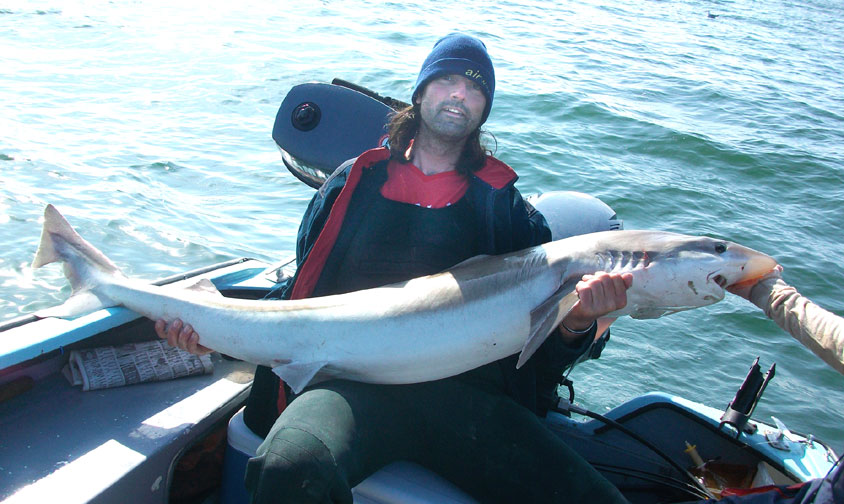
A large
Tope,
Galeorhinus
galeus, with a measured length of 175 cm
was captured on rod and line from his own boat while fishing in Wigtown
Bay, south west Scotland by Russell
Roberts (in the photograph). The weight
of this shark is estimated at 36 kg.
BMLSS
Tope Page 1
BMLSS
Tope Page 2
UK
Shark Tagging Programme
BMLSS
Sharks & Rays
Large
Tope from Sussex 1997
12
June 2009
A
most unusual capture of a 120 cm long (Mediterranean)
Moray Eel, Muraena
helena, weighing about 11 kg, was
caught by West Penwith fishermen
on their "Trevessa"
beam trawler just 60 miles off Newlyn
Harbour, Cornwall. This is the first one this
century and only ten are on record of this temperate-tropical fish being
caught in UK seas, the previous ones being caught in the 1990s. They are
a North East Atlantic fish being found from Senegal to the English Channel
(and also in the Mediterranean).
Mail
Online Report & Photograph
Previous
Report 2004 from Ireland
Earlier
March 1999 Report from Newlyn Fish Market
Earlier
Report from Herm, Channel Islands 1996
6 June
2009
A
large Stingray,
Dasyatis
pastinaca, was caught in an angling
competition by Gordon Pressey
off the western Isle of Wight and the imperial weight was 49 lb
5 oz (22.4 kg).
Isle
of Wight County Press Report
Previous
Large Stingray 2008
BMLSS
Shark News
5
June 2009
Commercial
fisherman Rick Ferbrache
caught a Common Octopus, Octopus
vulgaris, one mile off the Rousse headland,
off the north-west coast of Guernsey.
All
reports of Octopus vulgaris in Channel Island waters are of interest
because of their virtual disappearance after the cold winter of 1962/
1963.
Sealord
Photography
BMLSS
Octopuses
24-25
May 2009
There
were some By-the-Wind Sailors, Velella
velella,
washed up this weekend at Hell's
Mouth, Llyn
Peninsula, Wales. They were probably more like 30 mm in diameter.
20
May 2009
A
wreck of several thousand By-the-Wind Sailors, Velella
velella,
were spotted amongst the Devonshire rock pools due south of Newton
Ferrers on the River Yealm
estuary near Plymouth. They varied in size from
very small, 4 - 5 mm, up to 70 - 80 mm all laid out in rows up the
beach, graded in size by the wind, tide and topography, largest on the
bottom.
Further
reports have arrived from Cornish beaches including Praa
Sands, Par
Beach near St. Austell, and Kynance
Cove.
Full
Report
BMLSS
Velella
18
May 2009
A
large wreck of
millions of By-the-Wind Sailors, Velella
velella,
started getting washed ashore and extended, at least several miles east
from Penzance, south Cornwall.
The
specimens are very small, only a few millimetres in length. More Velella
arrived on each tide.
>
16 May 2009
Billions
of krill-like pelagic
Hyperiid
Amphipods (small
crustaceans)
were
washed up on the strandline at Redcar
and Saltburn in north-east
England (North Yorkshire). The local people reported that the strandings
of amphipods have occurred for several weeks prior to this report.

A previous
mass stranding of amphipods occurred on the North Sea coast in 1966.
Thousands
more were discovered washed up at Whitby
in North Yorkshire.
More
Images
BMLSS
Beachcombing
13
May 2009
About
50 specimens of the Bluefire Jellyfish, Cyanea
lamarcki, were washed up on Havelet beach, on the south
side of St. Peter Port, on the east coast of Guernsey and recorded at 5.19
pm.

The
jellyfish in the image measures about 30 cm across but most were much smaller.
12
May 2009
A
large native European Oyster,
Ostrea
edulis, weighing 1.36 kg, width
180 mm, length 170 mm and depth 70 mm was spotted on Plymouth fish
market in a box of mixed fish bought by merchant,
Peter
Randall of Mevagissey, and is now in the Mevagissey
Aquarium.
2007
Previous
Report of a large Oyster
BMLSS
Oyster & Slipper Limpet
BMLSS
Molluscs
On
my way home from work I was amazed to spot a Grey
Seal, Halichoerus grypus,
in
the heart of Glasgow City Centre on the River Clyde. The seal surfaced
seven times in 45 minutes between the
Albert
Bridge and the nearby tidal weir at Glasgow Green. The seal,
which was at least two metres long, appeared stranded and disorientated.
It did not stray from a very small stretch of the river for the whole time
I observed it.
BMLSS Seals
30
April 2009
ASaupe
(or Salema),
Sarpa
salpa, was caught by the Looe trawler
Guiding Light II, skipper Andy Giles about
six miles south of the Eddystone reef (i.e. about 16 miles south of Plymouth).
The specimen was 370 mm long, the body plump but elongated with ten longitudinal
yellow stripes. This Sea
Bream (Sparidae)
has only been recorded once before in British seas at St. Peter Port, Guernsey,
Channel Islands (on Zostera
beds at a spring tide) in 1983.
List
of NE Atlantic Sparidae
26
April 2009
Recreational
angler Troy Waterman
discovered the first British record of the alien Asian
Shore Crab, Hemigrapsus
sanguineus, on the north-west coast
of Guernsey in the Channel Isands. Dr. Paul
Chambers found the same species a week later
on the shore of the neighbouring island of Jersey.
The
Asian
Shore Crab has a square-shaped shell with
three spines on each side of the carapace.
Hemigrapsus
sanguineus is indigenous to the western
Pacific Ocean from Russia, along the Korean and Chinese coasts to Hong
Kong, and the Japanese archipelago. This species is an opportunistic
omnivore, feeding on macroalgae, salt marsh grass, larval and juvenile
fish, and small invertebrates such as amphipods, molluscs,
Barnacles,
and polychaete worms. It is highly reproductive
with a breeding season from May to September. This versatile crab inhabits
any shallow hard-bottom intertidal or sometimes subtidal habitats. This
speices has the potential to become an established competitor with native
crabs.
10
April 2009
Guernsey
commercial fisherman 'Chancre' Downes
landed a Boarfish (or Zulu Fish),
Capros
aper, while trawling for sand eels
on Great Bank outside St. Peter Port harbour. The fish had a total weight
of 38 grams and a total length of 13.2 cm. and was brought to the Guernsey
Aquarium. David Miller called me to identify it.
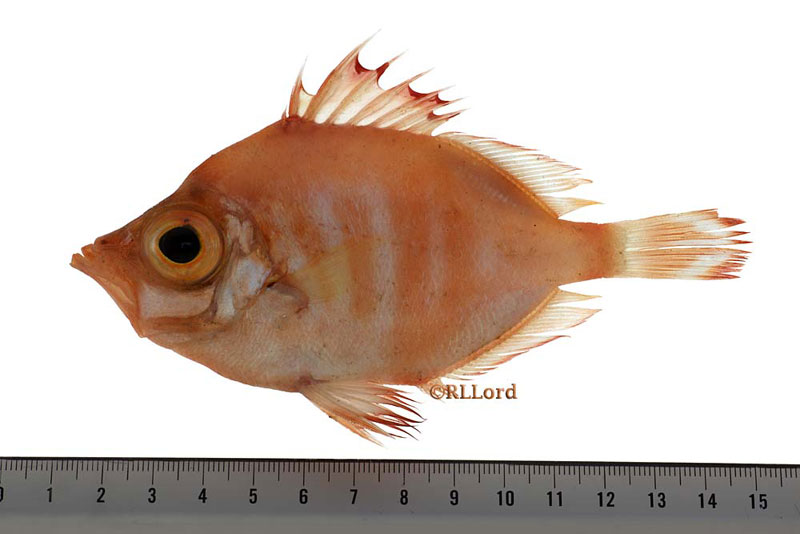
This
is only the second Boarfish
I have seen from Guernsey waters. The first one I saw was landed by Guernsey
commercial fisherman Shane Petit
on 23 February 2002.
Boarfish
are common in deep water of the western English Channel but rarely strays
east up the Channel. The fish's large eye and the orange/ red colour is
well suited to deep water as the longer wave length of red light is absorbed
by water before the blue and greens (which are reflected) and therefore
red coloured marine species appear dark or black at depth. The
Boarfish, like the John
Dory, has a protrusible (telescopic) mouth,
which is used for catching small species.
Sealord
Photography
BMLSS
Boar Fish
British
Marine Life News 2008

Cornish
Marine Life 2008 (Ray Dennis Records)
BMLSS
Oil Disasters page






